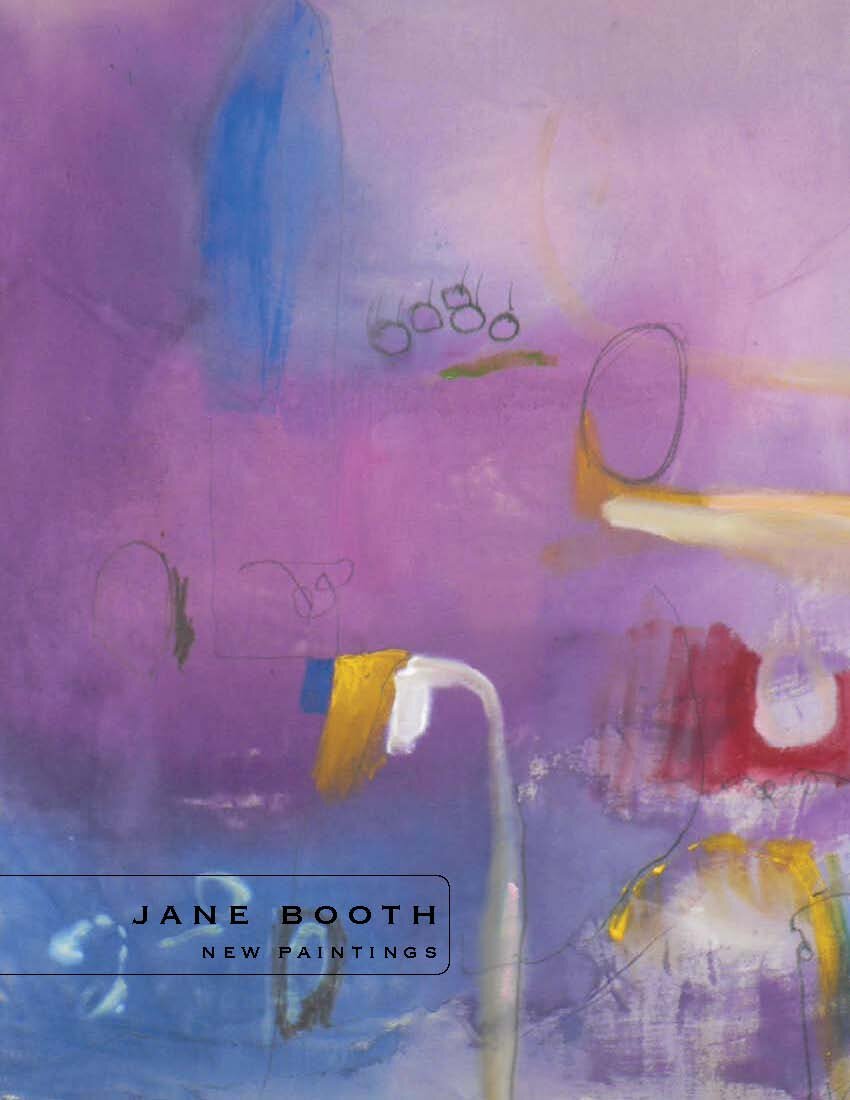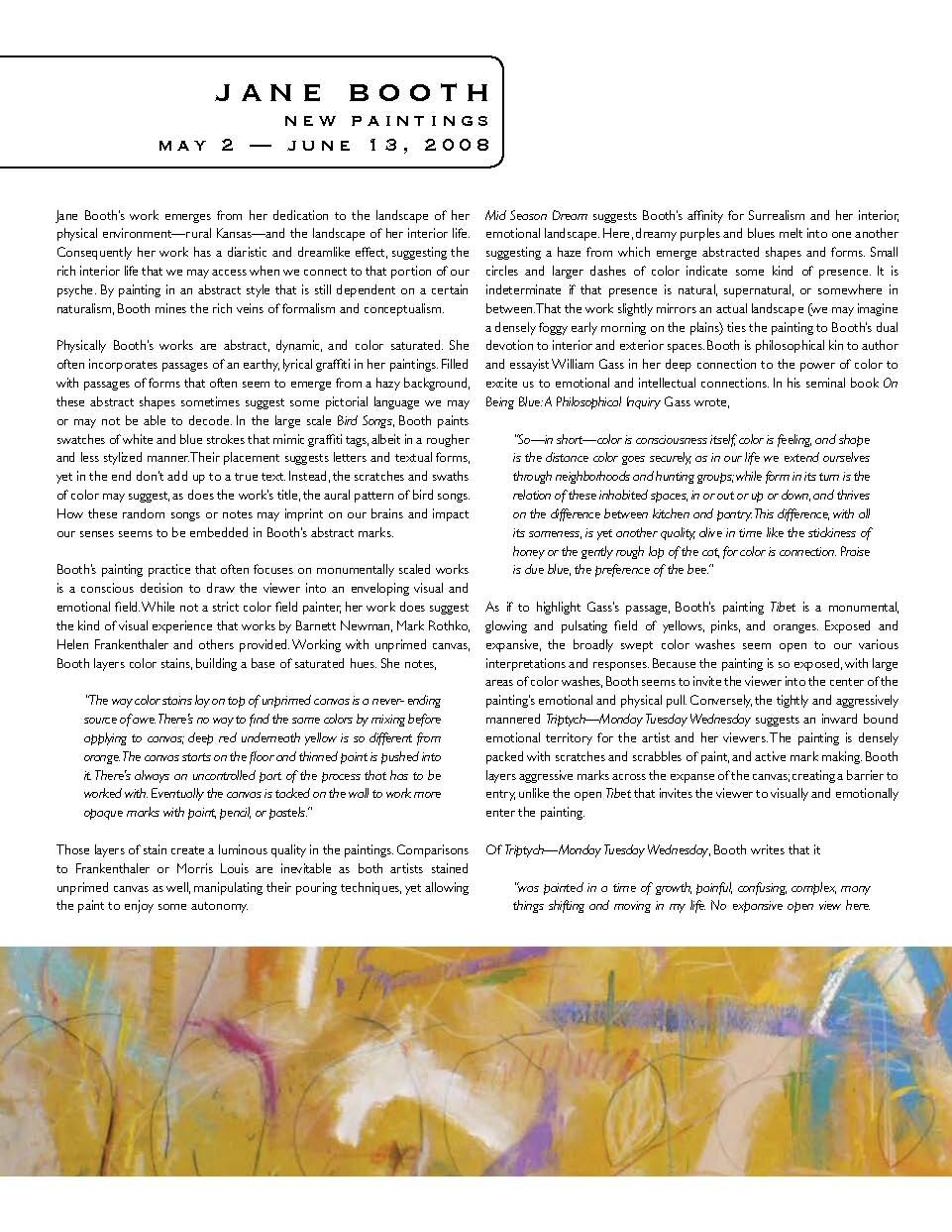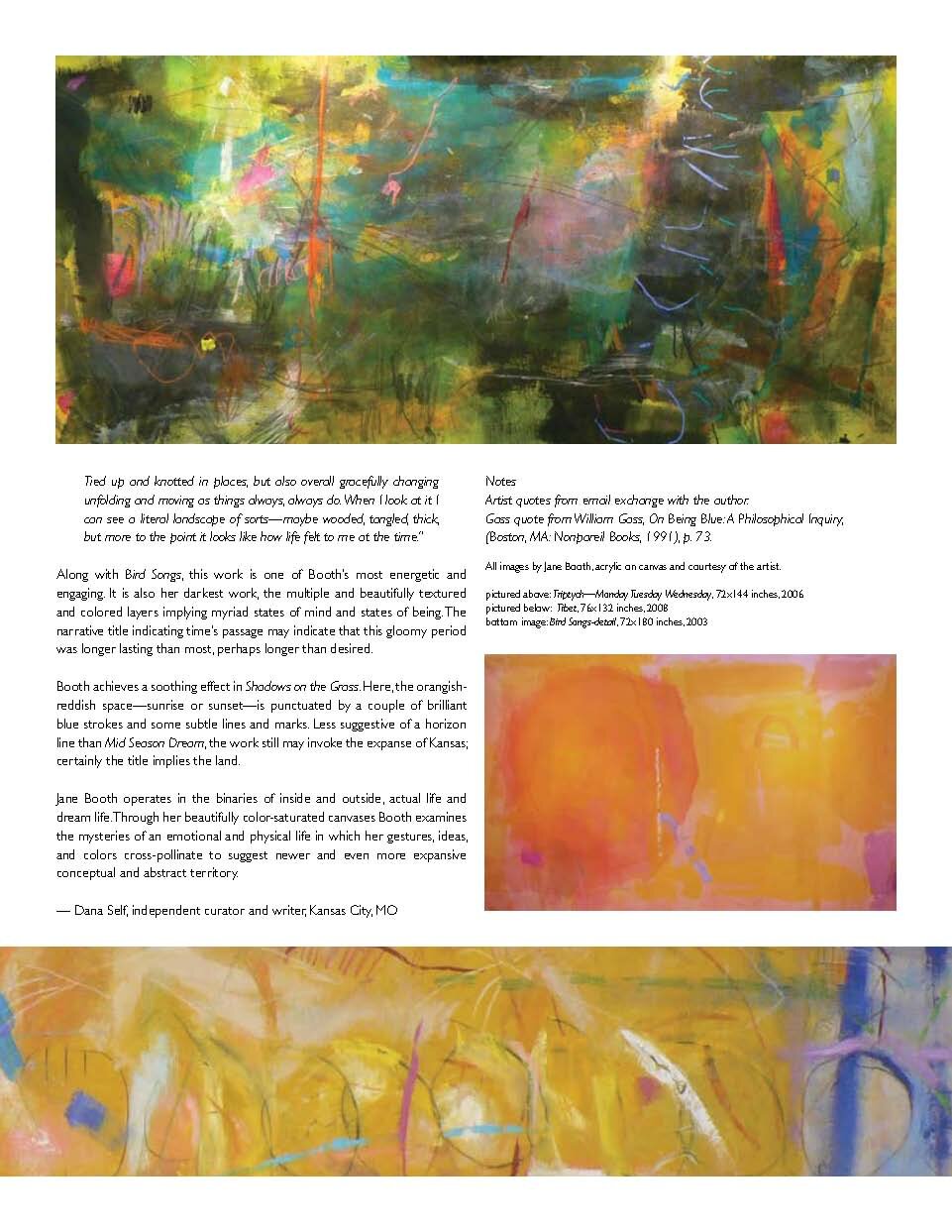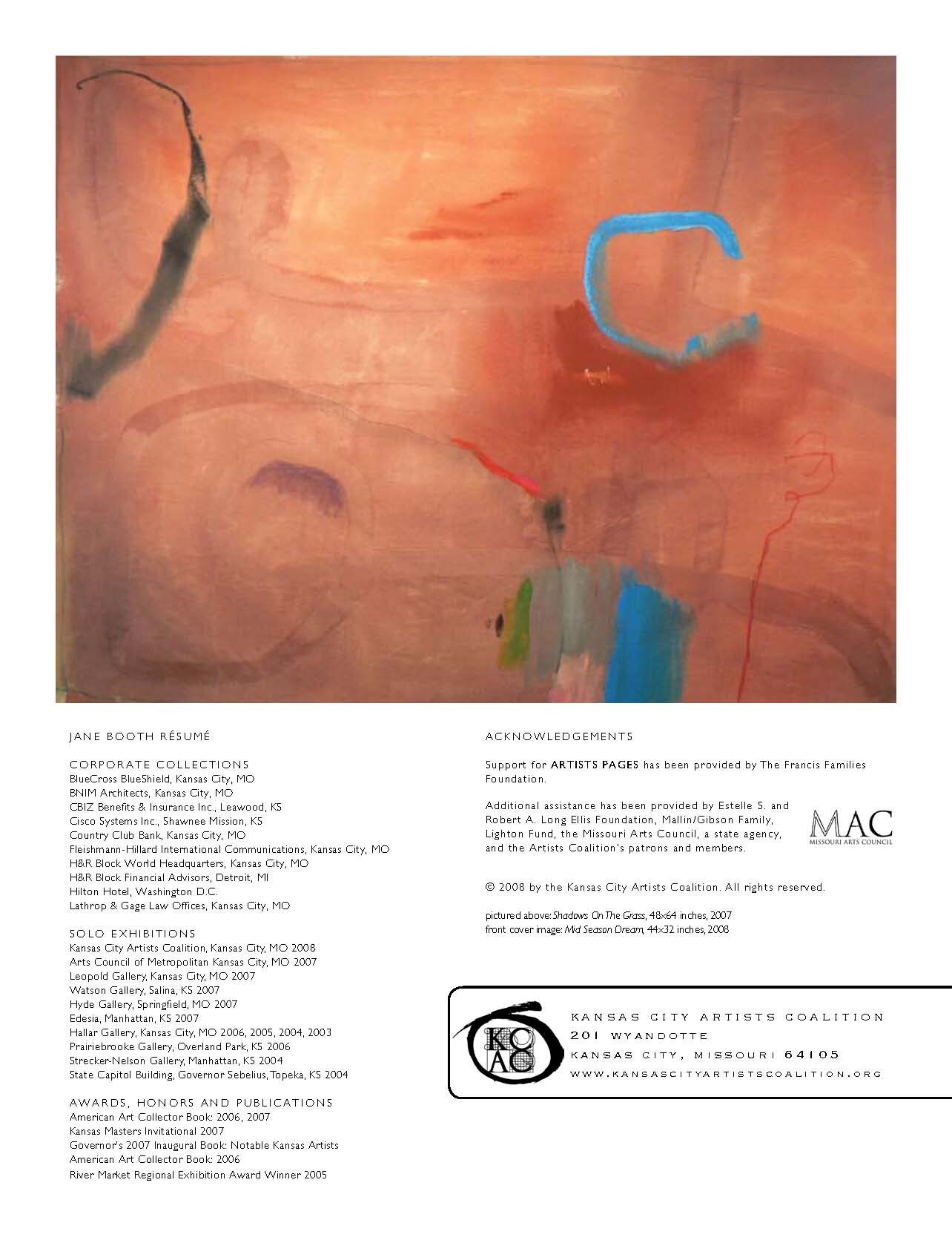2008 - Dana Self - Kansas City Artists Coalition
Jane Booth’s work emerges from her dedication to the landscape of her physical environment—rural Kansas—and the landscape of her interior life. Consequently her work has a diaristic and dreamlike effect, suggesting the rich interior life that we may access when we connect to that portion of our psyche. By painting in an abstract style that is still dependent on a certain naturalism, Booth mines the rich veins of formalism and conceptualism.
Physically Booth’s works are abstract, dynamic, and color saturated. She often incorporates passages of an earthy, lyrical graffiti in her paintings. Filled with passages of forms that often seem to emerge from a hazy background, these abstract shapes sometimes suggest some pictorial language we may or may not be able to decode. In the large scale Bird Songs, Booth paints swatches of white and blue strokes that mimic graffiti tags, albeit in a rougher and less stylized manner. Their placement suggests letters and textual forms, yet in the end don’t add up to a true text. Instead, the scratches and swaths of color may suggest, as does the work’s title, the aural pattern of bird songs. How these random songs or notes may imprint on our brains and impact our senses seems to be embedded in Booth’s abstract marks.
Booth’s painting practice that often focuses on monumentally scaled works is a conscious decision to draw the viewer into an enveloping visual and emotional field. While not a strict color field painter, her work does suggest the kind of visual experience that works by Barnett Newman, Mark Rothko, Helen Frankenthaler and others provided. Working with unprimed canvas, Booth layers color stains, building a base of saturated hues. She notes,
The way color stains lay on top of unprimed canvas is a never-ending source of awe. There’s no way to find the same colors by mixing before applying to canvas; deep red underneath yellow is so different from orange. The canvas starts on the floor and thinned paint is pushed into it. There’s always an uncontrolled part of the process that has to be worked with. Eventually the canvas is tacked on the wall to work more opaque marks with paint, pencil, or pastels.
Those layers of stain create a luminous quality in the paintings. Comparisons to Frankenthaler or Morris Louis are inevitable as both artists stained unprimed canvas as well, manipulating their pouring techniques, yet allowing the paint to enjoy some autonomy.
Mid-Season Dream suggests Booth’s affinity for Surrealism and her interior, emotional landscape. Here, dreamy purples and blues melt into one another suggesting a haze from which emerge abstracted shapes and forms. Small circles and larger dashes of color indicate some kind of presence. It is indeterminate if that presence is natural, supernatural, or somewhere in between. That the work slightly mirrors an actual landscape (we may imagine a densely foggy early morning on the plains) ties the painting to Booth’s dual devotion to interior and exterior spaces. Booth is philosophical kin to author and essayist William Gass in her deep connection to the power of color to excite us to emotional and intellectual connections. In his seminal book On Being Blue: A Philosophical Inquiry Gass wrote,
So—in short—color is consciousness itself, color is feeling, and shape is the distance color goes securely, as in our life we extend ourselves through neighborhoods and hunting groups; while form in its turn is the relation of these inhabited space, in or out or up or down, and thrives on the difference between kitchen and pantry. This difference, with all its sameness, is yet another quality, alive in time like the stickiness of honey or the gently rough lap of the cat, for color is connection….Praise is due blue, the preference of the bee.
As if to highlight Gass’s passage, Booth’s painting Tibet is a monumental, glowing and pulsating field of yellows, pinks, and oranges. Exposed and expansive, the broadly swept color washes seem open to our various interpretations and responses. Because the painting is so exposed, with large areas of color washes, Booth seems to invite the viewer into the center of the painting’s emotional and physical pull. Conversely, the tightly and aggressively mannered Triptych—Monday Tuesday Wednesday suggests an inward bound emotional territory for the artist and her viewers. The painting is densely packed with scratches and scrabbles of paint, and active mark making. Booth layers aggressive marks across the expanse of the canvas; creating a barrier to entry, unlike the open Tibet that invites the viewer to visually and emotionally enter the painting.
Of Triptych—Monday Tuesday Wednesday, Booth writes that it was painted in a time of growth, painful, confusing, complex, many things shifting and moving in my life. No expansive open view here. Tied up and knotted in places, but also overall gracefully changing unfolding and moving as things always, always do. When I look at it I can see a literal landscape of sorts—maybe wooded, tangled, thick, but more to the point for me it looks like how life felt to me at the time.
Along with Bird Song, this work is one of Booth’s most energetic and engaging. It is also her darkest work, the multiple and beautifully textured and colored layers implying myriad states of mind and states of being. The narrative title indicating time’s passage may indicate that this gloomy period was longer lasting than most, perhaps longer than desired.Booth achieves a soothing effect in Shadows on the Grass. Here, the orangish-reddish space—sunrise or sunset—is punctuated by a couple of brilliant blue strokes and some subtle lines and marks. Less suggestive of a horizon line than Mid Season Dream, the work still may invoke the expanse of Kansas; certainly the title implies the land.Jane Booth operates in the binaries of inside and outside, actual life and dream life. Through her beautifully color-saturated canvases Booth examines the mysteries of an emotional and physical life in which her gestures, ideas, and colors cross-pollinate to suggest newer and even more expansive conceptual and abstract territory.
—Dana Self, independent curator and writer, Kansas City, MO
Artist quotes from email exchange with the author.
Gass quote from William Gass, On Being Blue: A Philosophical Inquiry, (Boston, MA: Nonpareil Books, 1991), p. 73.





